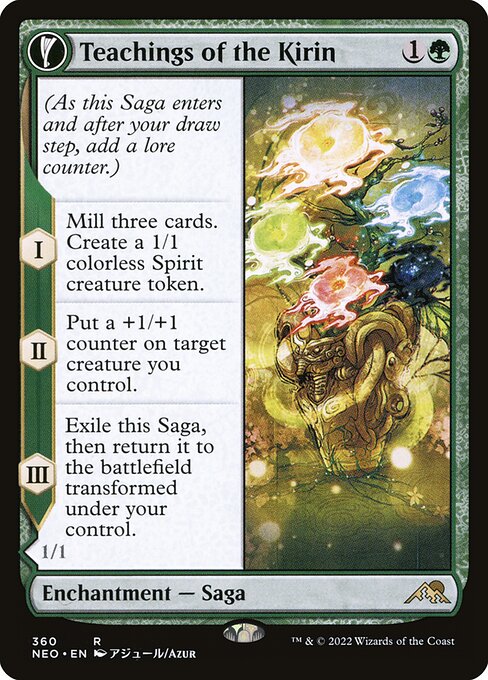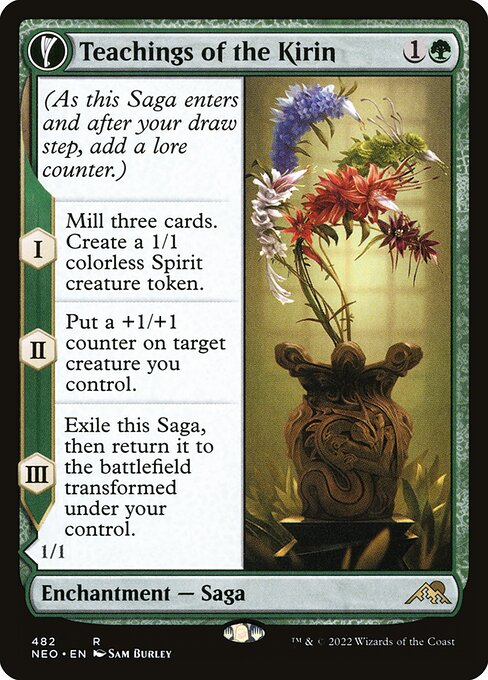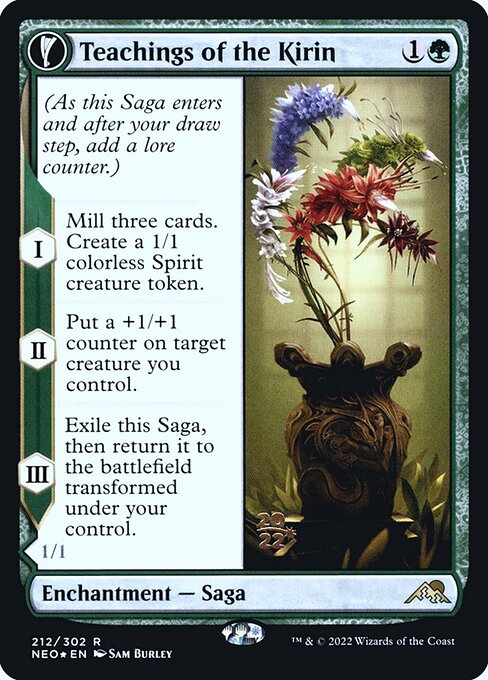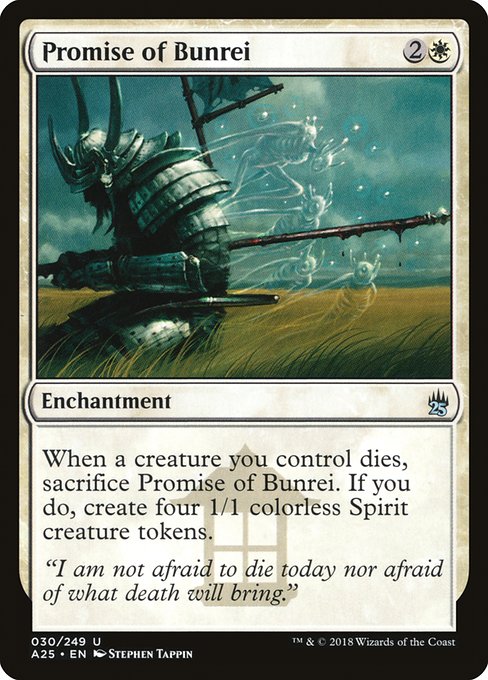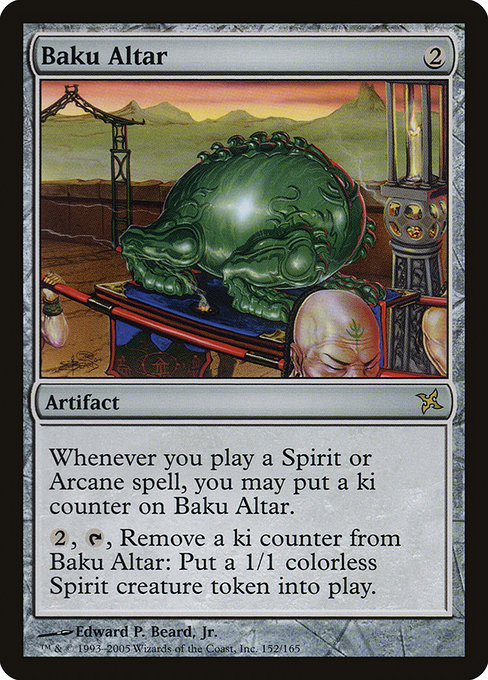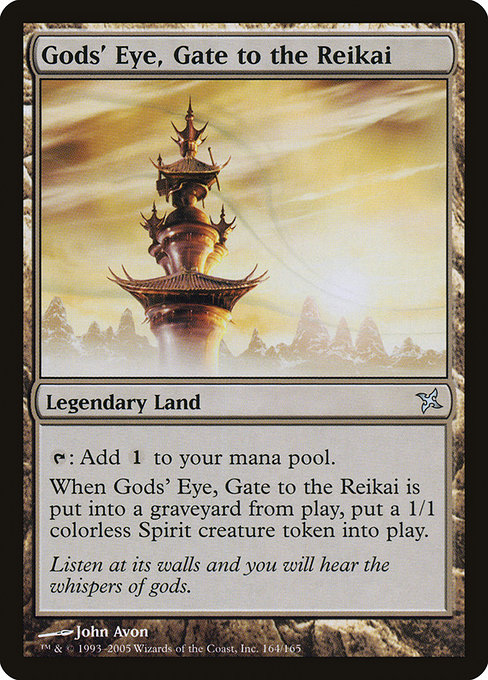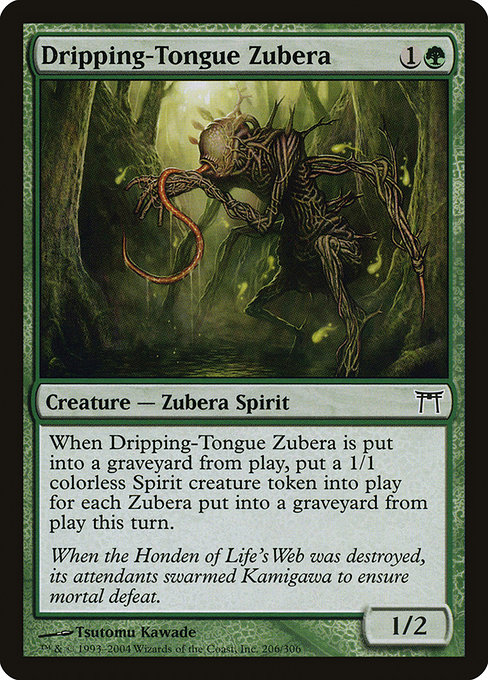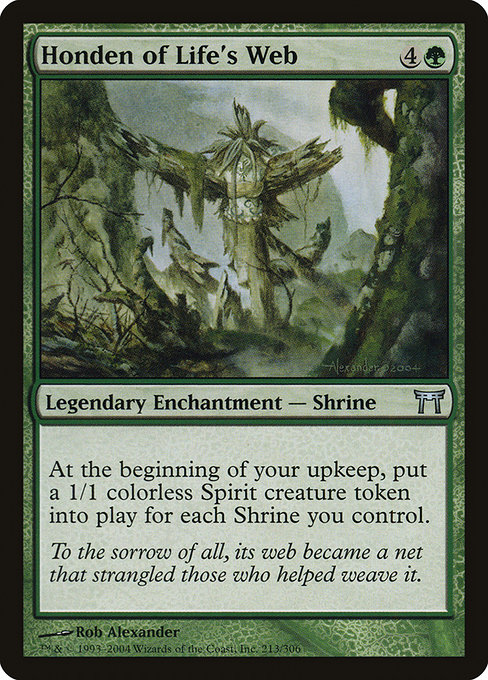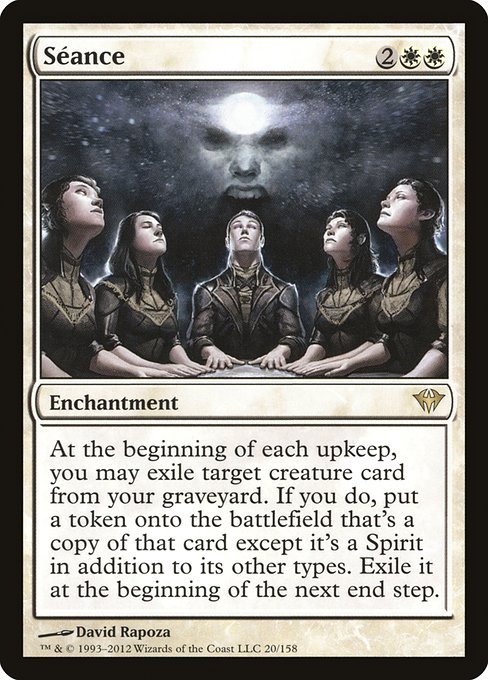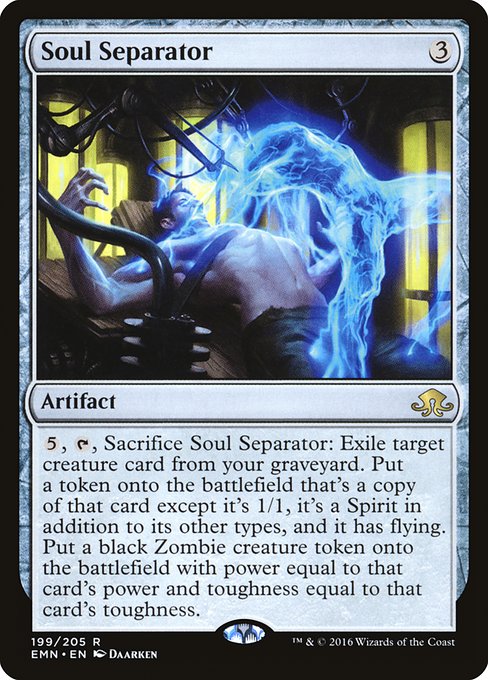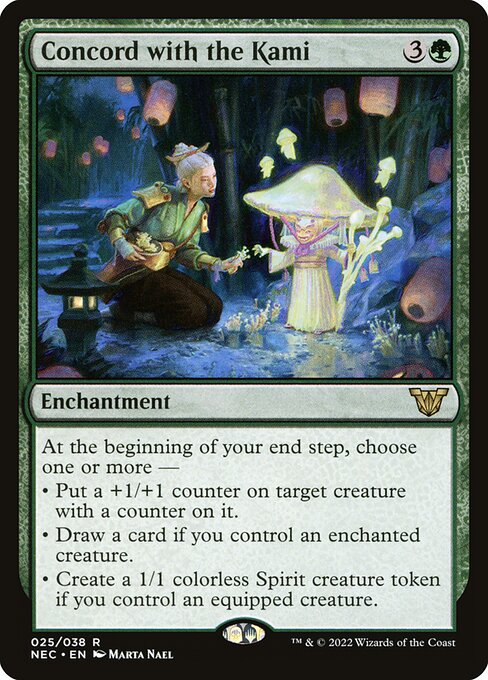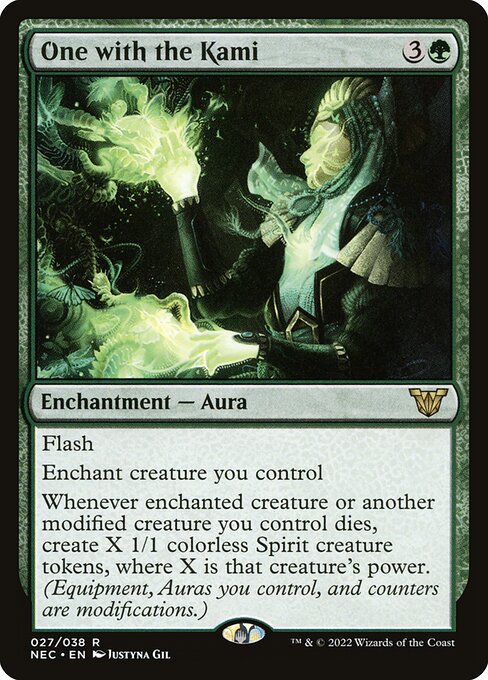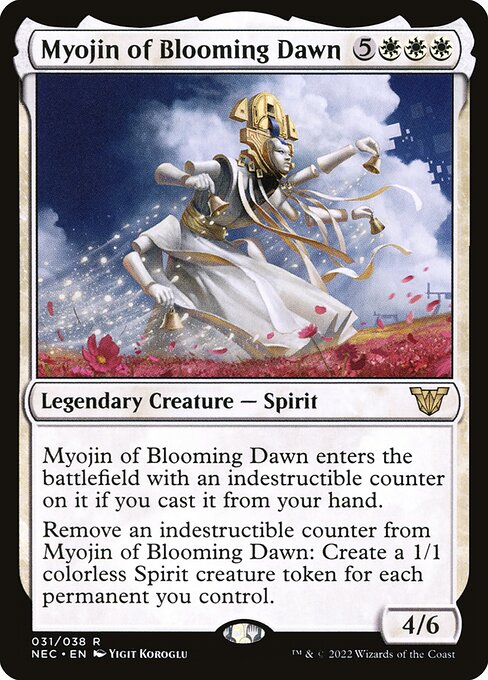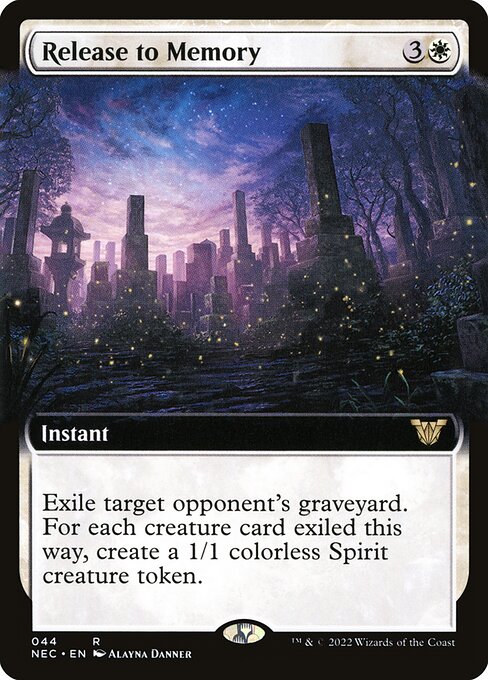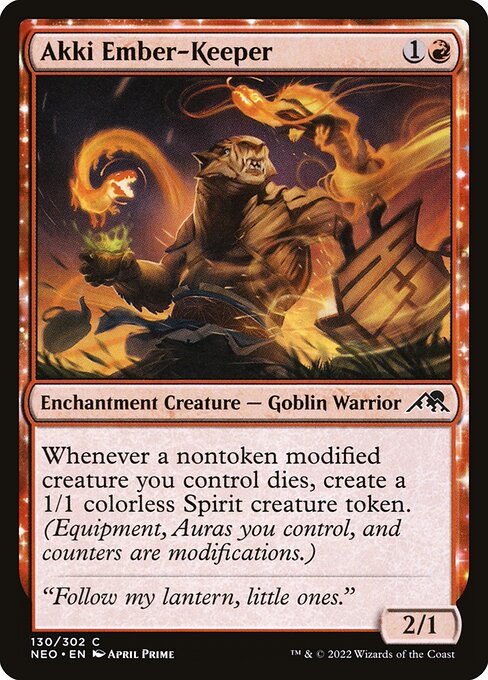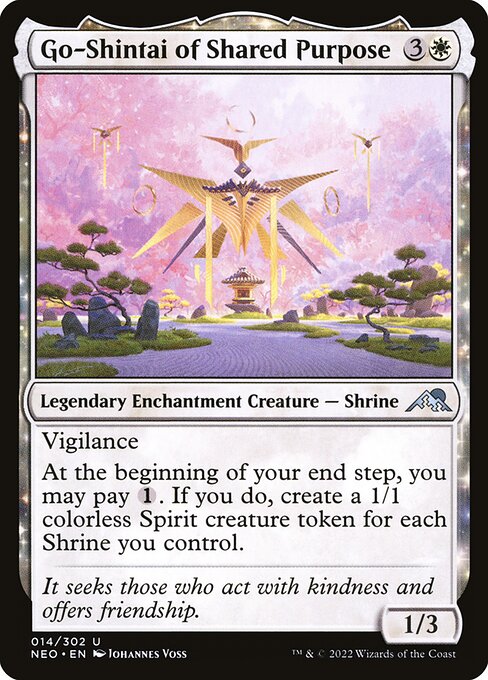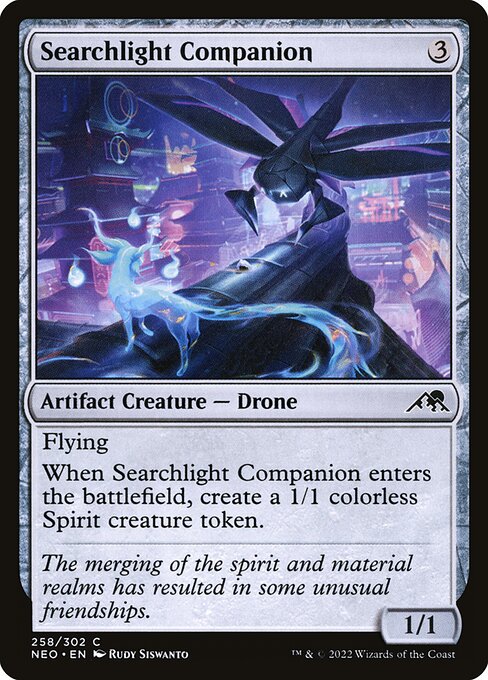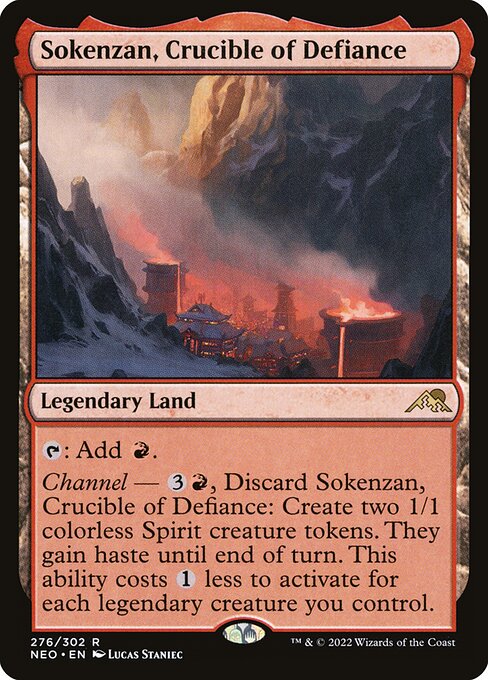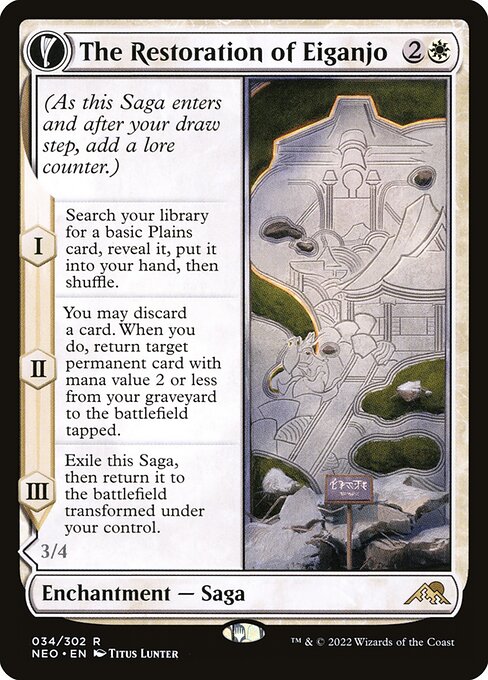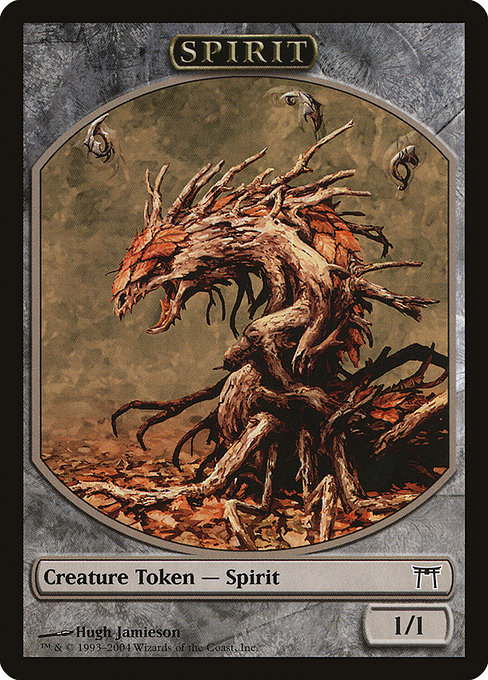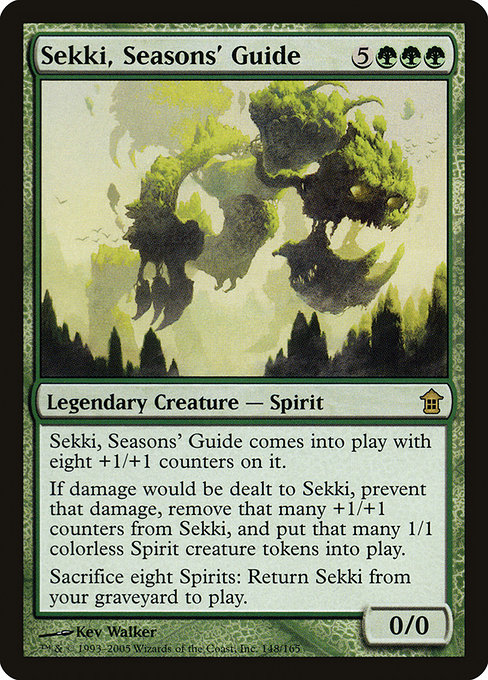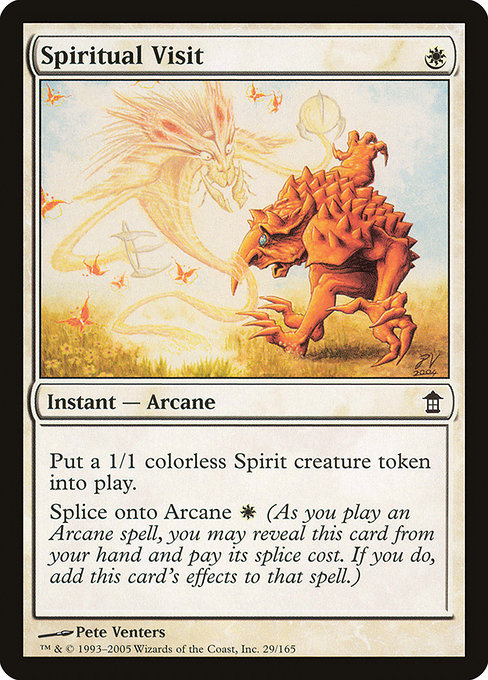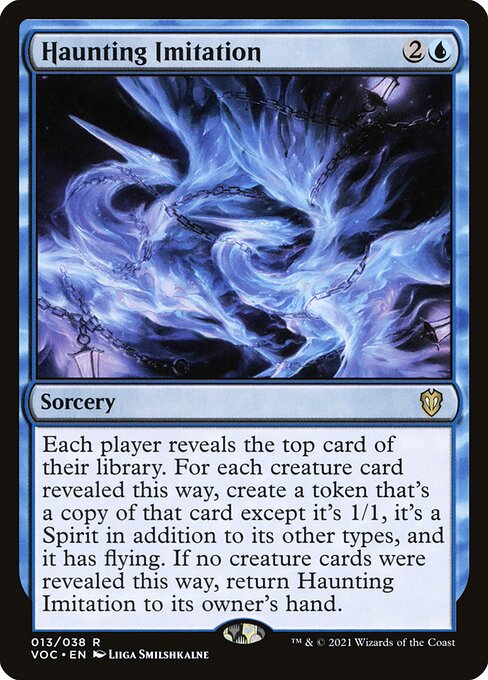Lehren der Kirin // Kirin-berührter Orochi
//
Verzauberung — Sage // Verzauberungskreatur — Ophis, Mönch
(Je eine Sagenmarke beim Ins-Spiel-Kommen und nach deinem Ziehsegment.)
I — Du millst drei Karten. Erzeuge einen 1/1 farblosen Geist-Kreaturenspielstein.
II — Lege eine +1/+1-Marke auf eine Kreatur deiner Wahl, die du kontrollierst.
III — Schicke diese Sage ins Exil und bringe sie dann transformiert unter deiner Kontrolle ins Spiel zurück. // Immer wenn der Kirin-berührte Orochi angreift, bestimme eines —
• Schicke eine Kreaturenkarte deiner Wahl aus einem Friedhof ins Exil. Wenn du dies tust, erzeuge einen 1/1 farblosen Geist-Kreaturenspielstein.
• Schicke eine Nichtkreatur-Karte deiner Wahl aus einem Friedhof ins Exil. Wenn du dies tust, lege eine +1/+1-Marke auf eine Kreatur deiner Wahl, die du kontrollierst.
I — Du millst drei Karten. Erzeuge einen 1/1 farblosen Geist-Kreaturenspielstein.
II — Lege eine +1/+1-Marke auf eine Kreatur deiner Wahl, die du kontrollierst.
III — Schicke diese Sage ins Exil und bringe sie dann transformiert unter deiner Kontrolle ins Spiel zurück. // Immer wenn der Kirin-berührte Orochi angreift, bestimme eines —
• Schicke eine Kreaturenkarte deiner Wahl aus einem Friedhof ins Exil. Wenn du dies tust, erzeuge einen 1/1 farblosen Geist-Kreaturenspielstein.
• Schicke eine Nichtkreatur-Karte deiner Wahl aus einem Friedhof ins Exil. Wenn du dies tust, lege eine +1/+1-Marke auf eine Kreatur deiner Wahl, die du kontrollierst.
1/1
standard
future
historic
gladiator
pioneer
explorer
modern
legacy
pauper
vintage
penny
commander
brawl
alchemy
paupercommander
duel
oldschool
premodern
Rulings
A transforming double-faced card enters the battlefield with its front face up by default, unless a spell or ability instructs you to put it onto the battlefield transformed or you cast it transformed, in which case it enters with its back face up.
The back face of a transforming double-faced card usually has a color indicator that defines its color.
The mana value of a transforming double-faced card is the mana value of its front face, no matter which face is up.
Each transforming double-faced card in this set is cast face up. In every zone other than the battlefield, consider only the characteristics of its front face. If it is on the battlefield, consider only the characteristics of the face that's up; the other face's characteristics are ignored.
Each face of a transforming double-faced card has its own set of characteristics: name, types, subtypes, abilities, and so on. While a transforming double-faced permanent is on the battlefield, consider only the characteristics of the face that's currently up. The other set of characteristics is ignored.
If you are instructed to put a card that isn't a double-faced card onto the battlefield transformed, it will not enter the battlefield at all. In that case, it stays in the zone it was previously in. For example, if a single-faced card is a copy of Azusa's Many Journeys, the chapter III ability will cause it to be exiled and then remain in exile.
The back face of a transforming double-faced card usually has a color indicator that defines its color.
The mana value of a transforming double-faced card is the mana value of its front face, no matter which face is up.
Each transforming double-faced card in this set is cast face up. In every zone other than the battlefield, consider only the characteristics of its front face. If it is on the battlefield, consider only the characteristics of the face that's up; the other face's characteristics are ignored.
Each face of a transforming double-faced card has its own set of characteristics: name, types, subtypes, abilities, and so on. While a transforming double-faced permanent is on the battlefield, consider only the characteristics of the face that's currently up. The other set of characteristics is ignored.
If you are instructed to put a card that isn't a double-faced card onto the battlefield transformed, it will not enter the battlefield at all. In that case, it stays in the zone it was previously in. For example, if a single-faced card is a copy of Azusa's Many Journeys, the chapter III ability will cause it to be exiled and then remain in exile.
Rulings
A transforming double-faced card enters the battlefield with its front face up by default, unless a spell or ability instructs you to put it onto the battlefield transformed or you cast it transformed, in which case it enters with its back face up.
The back face of a transforming double-faced card usually has a color indicator that defines its color.
The mana value of a transforming double-faced card is the mana value of its front face, no matter which face is up.
Each transforming double-faced card in this set is cast face up. In every zone other than the battlefield, consider only the characteristics of its front face. If it is on the battlefield, consider only the characteristics of the face that's up; the other face's characteristics are ignored.
Each face of a transforming double-faced card has its own set of characteristics: name, types, subtypes, abilities, and so on. While a transforming double-faced permanent is on the battlefield, consider only the characteristics of the face that's currently up. The other set of characteristics is ignored.
If you are instructed to put a card that isn't a double-faced card onto the battlefield transformed, it will not enter the battlefield at all. In that case, it stays in the zone it was previously in. For example, if a single-faced card is a copy of Azusa's Many Journeys, the chapter III ability will cause it to be exiled and then remain in exile.
The back face of a transforming double-faced card usually has a color indicator that defines its color.
The mana value of a transforming double-faced card is the mana value of its front face, no matter which face is up.
Each transforming double-faced card in this set is cast face up. In every zone other than the battlefield, consider only the characteristics of its front face. If it is on the battlefield, consider only the characteristics of the face that's up; the other face's characteristics are ignored.
Each face of a transforming double-faced card has its own set of characteristics: name, types, subtypes, abilities, and so on. While a transforming double-faced permanent is on the battlefield, consider only the characteristics of the face that's currently up. The other set of characteristics is ignored.
If you are instructed to put a card that isn't a double-faced card onto the battlefield transformed, it will not enter the battlefield at all. In that case, it stays in the zone it was previously in. For example, if a single-faced card is a copy of Azusa's Many Journeys, the chapter III ability will cause it to be exiled and then remain in exile.
Votre collection ? vos decks ?
Envie de gérer votre collection et/ou créer des decks ?
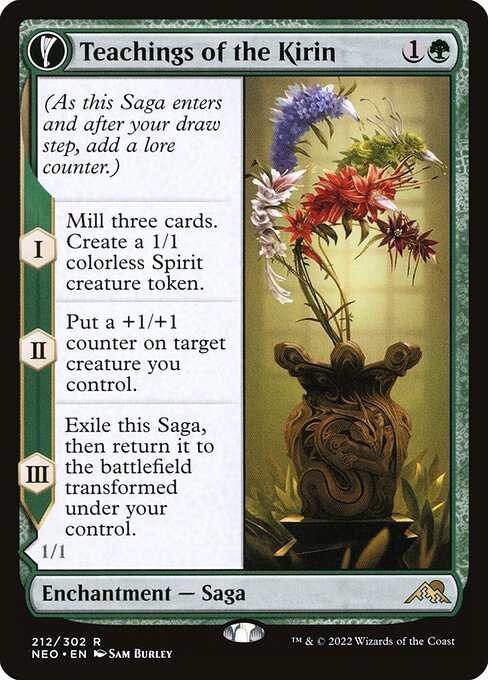

 0
0
 0.13€
0.13€
